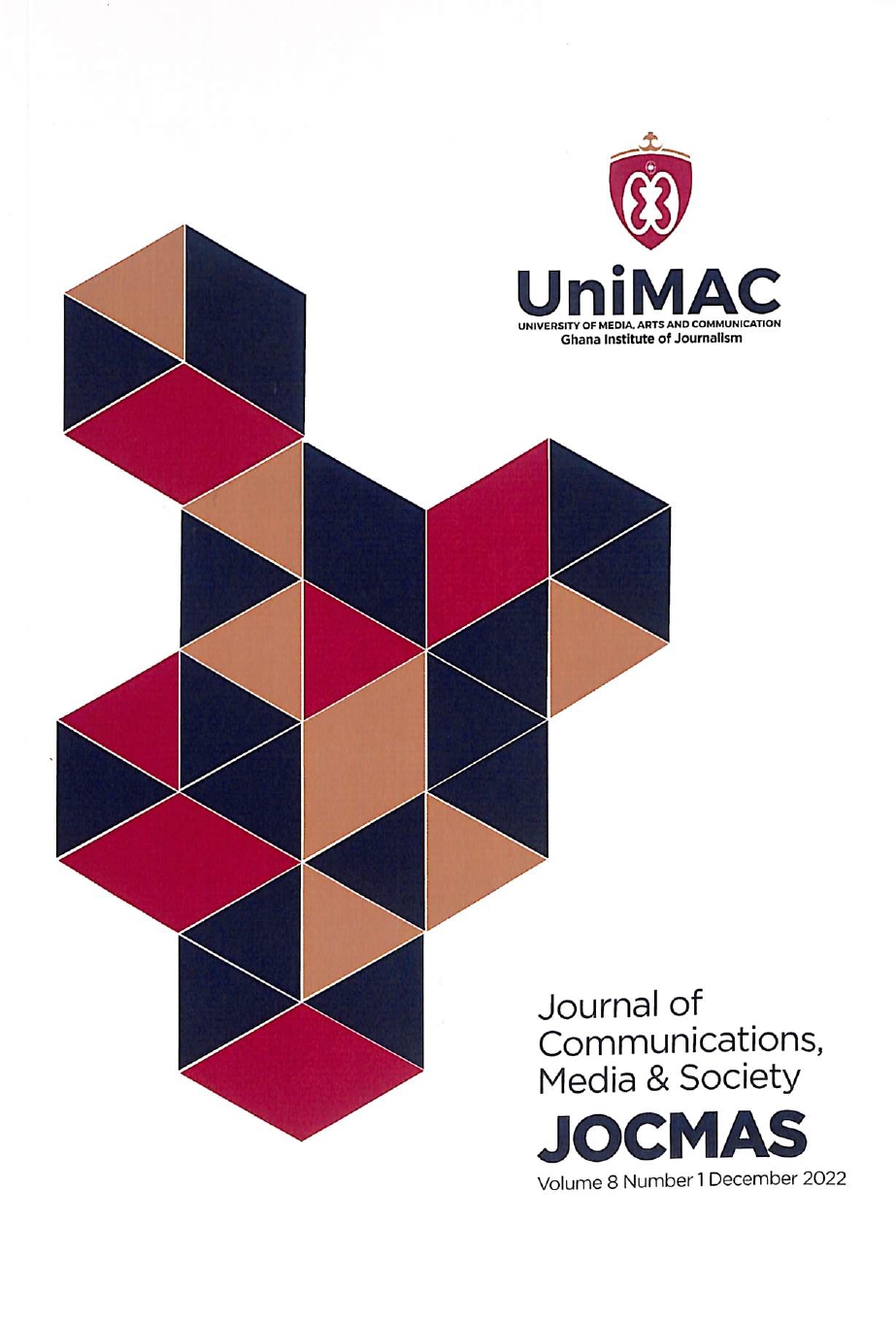Towards Effectiveness of Advertising Recall on Brand Preference in Ghanaian Telecommunication Companies
DOI:
https://doi.org/10.63772/jocmas.v7n1.3Keywords:
Ghana, Advertising Recall, Brand Preference, Ghanaian Telecommunication CompaniesAbstract
Advertising recall is one of the categories of measures of the cognitive response which have been developed. What remains a dilemma to advertisers is whether there is a correlation between recall of advertising and brand preference or not? This study sought to determine the relationship between advertising recall and brand preference among young communication students in Accra. Expectancy Value Theory and Media System Dependency Theory were used. The study adopted simple random sampling procedure to respond to two propositions: 1. That there is no relationship between advertising recall and purchase of product or service; 2. That there is no relationship between advertising recall and brand preference. Findings indicate that relationship between advertising recall and brand preference is significant. Majority of the respondents also emphasized that, in the future, their next choice of brand will be based on ‘efficiency of service'.
Downloads
Usage Statistics
- Abstract Views: 208
- PDF Downloads: 42
References
Aaker, D. A. (1991). Managing brand equity: Capitalizing on the value of a brand name. Free Press.
Aaker, D. A., & Biel, A. L. (1993). Brand equity and advertising: Advertising’s role in building strong brands. Lawrence Erlbaum Associates.
Aaker, D. A., & Stayman, D. M. (1990). Measuring audience perceptions of commercials and relating them to ad impact. Journal of Advertising Research, 30(4), 7–17.
Aaker, J. L. (1997). Dimensions of brand personality. Journal of Marketing Research, 34(3), 347–356. DOI: https://doi.org/10.1177/002224379703400304
Agresti, A., & Finlay, B. (2009). Statistical methods for the social sciences (4th ed.). Pearson Prentice Hall.
Anderson, J. R. (1983). The architecture of cognition. Harvard University Press.
Barry, T. E. (1987). The development of the hierarchy of effects: An historical perspective. Current Issues and Research in Advertising, 10(2), 251–295. https://doi.org/10.1080/01633392.1987.10504981
Belch, G. E., & Belch, M. A. (2001). Advertising and promotion: An integrated marketing communications perspective (5th ed.). McGraw-Hill.
Brassington, F., & Pettitt, S. (2000). Principles of marketing (2nd ed.). Pearson Education.
Brouwer, M., & Kamstra, P. (2000). The advertising pyramid: A model for learning and recall in advertising. Journal of Advertising Research, 40(1–2), 35–43.
Cannon, H. M., & Leckenby, J. D. (1981). A comparison of the cognitive and affective components of attitude. Journal of Advertising, 10(3), 15–20.
Cohen, J. (1988). Statistical power analysis for the behavioral sciences (2nd ed.). Erlbaum.
Danaher, P. J., & Rossiter, J. R. (2011). Comparing perceptions of marketing communication channels. European Journal of Marketing, 45(1/2), 6–42. DOI: https://doi.org/10.1108/03090561111095586
Daramola, I. (2003). Introduction to mass communication. Rothan Press.
Du Plessis, E. (2008). The advertised mind: Groundbreaking insights into how our brains respond to advertising. Kogan Page.
Fennis, B. M., & Stroebe, W. (2010). The psychology of advertising. Psychology Press. DOI: https://doi.org/10.4324/9780203853238
Fishbein, M., & Ajzen, I. (1975). Belief, attitude, intention, and behavior: An introduction to theory and research. Addison-Wesley.
Gill, J., & Johnson, P. (2002). Research methods for managers (3rd ed.). SAGE.
Hair, J. F., Bush, R. P., & Ortinau, D. J. (2006). Marketing research within a changing environment (3rd ed.). McGraw-Hill/Irwin.
Howard, J. A., & Sheth, J. N. (1969). The theory of buyer behavior. Wiley.
Jefkins, F. (2000). Advertising (4th ed.). Pearson Education.
Kassarjian, H. H. (1977). Content analysis in consumer research. Journal of Consumer Research, 4(1), 8–18. DOI: https://doi.org/10.1086/208674
Keller, K. L. (2003). Strategic brand management: Building, measuring, and managing brand equity (2nd ed.). Prentice Hall.
Keller, K. L. (2008). Strategic brand management (3rd ed.). Pearson Education.
Kotler, P., & Armstrong, G. (2001). Principles of marketing (9th ed.). Prentice Hall.
Kotler, P., & Keller, K. L. (2012). Marketing management (14th ed.). Pearson Education.
Krugman, H. E. (1965). The impact of television advertising: Learning without involvement. Public Opinion Quarterly, 29(3), 349–356. DOI: https://doi.org/10.1086/267335
Lavidge, R. J., & Steiner, G. A. (1961). A model for predictive measurements of advertising effectiveness. Journal of Marketing, 25(6), 59–62. DOI: https://doi.org/10.1177/002224296102500611
MacInnis, D. J., & Jaworski, B. J. (1989). Information processing from advertisements: Toward an integrative framework. Journal of Marketing, 53(4), 1–23. DOI: https://doi.org/10.1177/002224298905300401
Malhotra, N. K. (2010). Marketing research: An applied orientation (6th ed.). Pearson Education.
McCracken, G. (1989). Who is the celebrity endorser? Cultural foundations of the endorsement process. Journal of Consumer Research, 16(3), 310–321. DOI: https://doi.org/10.1086/209217
Percy, L., & Rossiter, J. R. (1992). A model of brand awareness and brand attitude advertising strategies. Psychology & Marketing, 9(4), 263–274. DOI: https://doi.org/10.1002/mar.4220090402
Petty, R. E., & Cacioppo, J. T. (1986). Communication and persuasion: Central and peripheral routes to attitude change. Springer-Verlag. DOI: https://doi.org/10.1007/978-1-4612-4964-1
Sekaran, U. (2003). Research methods for business: A skill building approach (4th ed.). Wiley.
Schiffman, L. G., & Kanuk, L. L. (2004). Consumer behavior (8th ed.). Pearson Education.
Solomon, M. R. (2006). Consumer behavior: Buying, having, and being (7th ed.). Pearson Prentice Hall.
Vaughn, R. (1980). How advertising works: A planning model. Journal of Advertising Research, 20(5), 27–33.
Wells, W., Burnett, J., & Moriarty, S. (2000). Advertising: Principles and practice (5th ed.). Prentice Hall.
Downloads
Published
Issue
Section
License
Copyright (c) 2025 Journal of Communications, Media And Society (JOCMAS)

This work is licensed under a Creative Commons Attribution-NonCommercial 4.0 International License.








